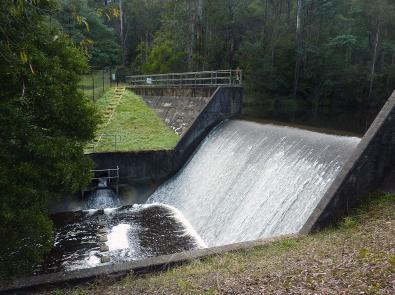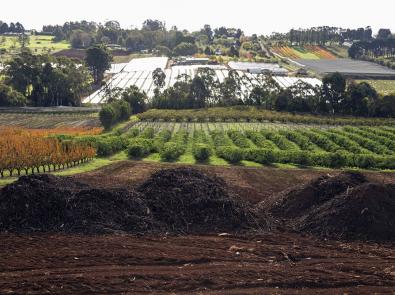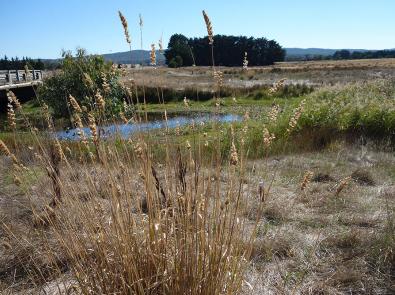Our waterways are an important resource shared by people, plants and animals. That’s why we help set aside water for the environment to keep them healthy, by managing the amount taken for other uses.
What is water for the environment?
Many of Victoria’s rivers and wetlands have been modified as our population grows, so that water can be used for towns, industry and food production. Each year, some rivers part with up to half of the water they would have naturally had before dams, weirs and reservoirs were built.
That’s why we need water for the environment: a portion of water reserved for maintaining the long-term health of our rivers and groundwater ecosystems, and the plants and animals that depend on them.
For a quick overview, watch this video or read the transcript:
But everyone benefits from healthy rivers – for example, through:
- more recreational opportunities like fishing, rowing and birdwatching
- healthy country for Traditional Owners, who have a long-standing cultural connection to waterways and floodplains
- better water quality, which has economic benefits for farmers and water supply
Managing water for the environment
So how is this water allocated?
A Water Act amendment in 2005 established the Environmental Water Reserve, which legally protects water for the environment through:
- Environmental Entitlements – legal rights to access water at certain storage reservoirs and release it into waterways to mimic natural flows
- stream flow management plans and local management rules, which set conditions on when river water can be taken
- placing restrictions on groundwater users like farmers, rural landholders and water authorities to protect groundwater levels.
That’s where we come in.
Melbourne Water is responsible for managing water for the environment, working with the Victorian Environmental Water Holder and other delivery partners. We conduct studies to identify the flows needed by a particular river or wetland, and monitor them to make sure environmental flows are being effective.
Find out what flows are needed in our waterways from the environmental flows studies:
Environmental Water Management Plans
Environmental Water Management Plans set environmental watering goals, and use the information from environmental flows studies to work out the water regime required to meet these goals.
Environmental flow releases
For water for the environment to be most effective, we need to release the right amount at the right time for the right duration. For example, high autumn flows allow fish and platypus to migrate and breed, while low summer flows maintain pools that provide shelter for aquatic animals.
We plan environmental releases a year in advance based on seasonal conditions, the amount of available water and the environmental outcomes we want to achieve. Find out what flows are occurring or scheduled, and how they’re helping our environment:
View all environmental releases
The future of water for the environment
In the future, climate change is expected to result in increased temperatures and evaporation, reduced rainfall, and increased frequency and intensity of droughts. More summer storms will also occur, but these are unlikely to provide the right amount of water at the right time for the right duration.
The Victorian Government, Victorian water industry and representatives from Traditional Owner groups have worked together to develop the Central and Gippsland Region Sustainable Water Strategy (CGRSWS). The CGRSWS was published in 2022 and is designed to meet the central and Gippsland region’s future water challenges
Central and Gippsland Region Sustainable Water Strategy 2022
The CGRSWS includes commitments to return water to the region’s rivers to help the environment. You can read about how this additional water will benefit the environment in our main river systems in the following factsheets:
Stream Flow Management Plans
Many of Melbourne’s waterways are not dammed, but their water can still be taken to fill farm dams, water crops and supply households and towns. Where there is high demand, Stream Flow Management Plans and Local Management Rules set conditions on taking water – ensuring there is enough for the environment and for water users.
View current Stream Flow Management Plans online, or read our fact sheet for more information.
Groundwater
Groundwater supports billabongs, wetlands, waterways and estuaries – habitats called ‘groundwater-dependent ecosystems’. These are important refuges for plants and animals during long, dry periods, when they are the only pools that permanently retain water.
Groundwater pumping can impact these habitats, so Melbourne Water assesses the likely risks from licensing decisions like new bores. We also work with Southern Rural Water to develop Local Management Plans, which set rules for extracting groundwater so it can be shared with the environment.
You may also like...
Learn more about the benefits of environmental water from the Victorian Environmental Water Holder.
Read the Department of Environment, Land, Water and Planning’s summary of Victoria’s environmental entitlement framework.
Interactive map of Victoria’s groundwater bore data from government departments, agencies and research institutions.






